|
|
Isoda Laboratory |
|
|
|
|
|
|
|
|
|
|
|
|
Methods of researches
|
|
|
|
|
Essentially, I grow crops under field conditions, and analyze by the growth analysis method including measuring dry weights and leaf area. And also physiological conditions of crops, such as leaf temperature, transpiration, intercepted radiation, chlorophyll fluorescence etc., are measured by various sensors. In addition, I am analyzing physiological characteristics using by remote sensing methods. |
|
|
|
|
|
) |
|
|
|
|
|
| Intercepted radiation |
|
|
|
Red films are simple integrated solarimeter films (Opt-leaf). Intercepted radiation can be assumed by the degree of fading red dye. We can attach these films directly on leaf surfaces, due to very light in weight, and measure intercepted radiation by leaves without wind effects and leaf movement. |
|
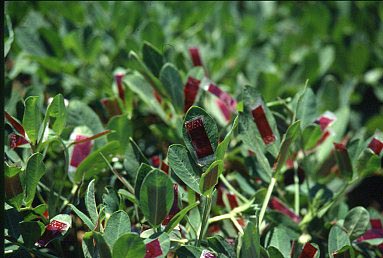 |
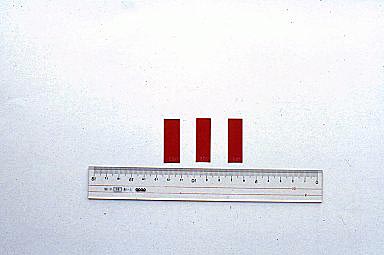 |
|
| Transpiration rate (sap flow rate), leaf temperature |
|
|
|
|
Transpiration rate of a whole plant is able to monitor by a sap slow gauge attaching at the stem. Theremocuples are also able to monitor leaf temperature for some stresses. |
|
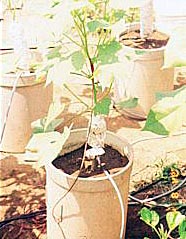 |
|
|
| Chlorophyll fluorescence |
|
|
|
Measuring chlorophyll fluorescence from leaves can detect the efficiency of photosystem II (light reaction of photosynthesis), and photoinhibition in photosystem II. |
|
|
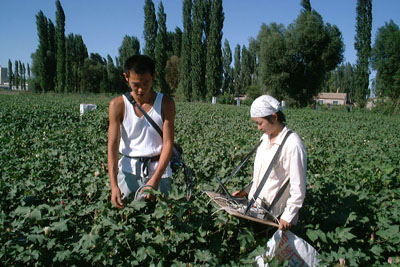 |
|
|
| Spectro-reflectance from leaves and/or canopy |
|
|
|
Measuring spectro-reflectances from leaves and/or canopy is one of remote sensing methods, can detect physiological conditions including photosynthesis. Near future, we may monitor photosynthesis of field grown crops from artificial satellites with the same sensor. |
|
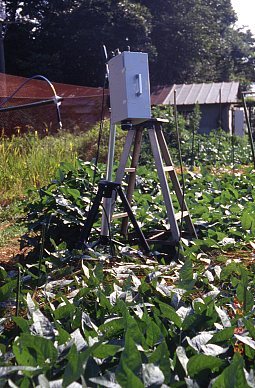 |
|
|
|
|
|
|
|
|
 |
|
|
|
| Graduate School of Horticulture, Chiba University |
|
| Phone : +81-47-308-8814 |
|
|
Dr. Akihiro Isoda |
|
|
| E-mail : isoda@ |
|
|
| Please attach 'faculty.chiba-u.jp' after '@' |
|
|
|
|
|
|
|
|
|
|
|
|
|
|
|
|
|
|
|
|
|
|
|
|
|
|
|
|
|




